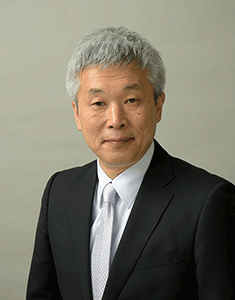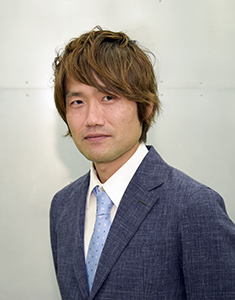
Ryuichiro Yoshie
President
Tokyo Polytechnic University
Tokyo Polytechnic University (TPU) originated as the “Konishi Professional School of Photography”, founded in 1923. It was established to train technicians and researchers in the field of photography, a cutting-edge expression technology at the time. The school was a pioneer in combining self-expression through photography (art) with photographic techniques (technology). It developed into a university consisting of 2 unique faculties, the Faculty of Engineering and the Faculty of Arts, and “technology-art fusion” is its unique characteristic.
TPU’s project, which was adopted for a Private University Research Branding Project (Type B “Global Development Category”) for fiscal year 2016, is rooted in academic disciplines such as photography, printing, and optics, which have been research fields of TPU since its founding. The project picks “color” as a cross-cutting research theme that is common in today’s Faculty of Engineering and Faculty of Arts. We will form the only “International Research Center for Color Science and Art” in Japan. Especially, disseminating information by means of media art such as photography, video, augmented reality, projection mapping, computer graphics, manga, and games is a unique branding strategy only possible with TPU. We will also prepare a gallery where visitors can experience the pleasure of learning the science of “color” with media art. We also plan to host public lectures, international workshops, and research results presentation sessions under the theme of “color”. We hope to attract many people to these events.
Through this project, we will build a solid brand for our university to be known for “color” and aim for true “fusion of engineering and art”. So please look forward to our activities from now on.

Yasushi Noguchi
Director
International Research Center for Color Science and Art
“Color” is mysterious. We think we understand it, but it has many unknown facets.
We tend to believe that the world exists as we see it in our everyday lives. But human beings can only see a part of the spectrum of electromagnetic waves falling on the earth. For example, we cannot “see” infrared or ultraviolet rays. However, some species of animals can. The world seen by those animals may be richer than the one we human beings see.
Seeing “color” seems to be self-evident, but, concerning its mechanism, there are more unknown things than known ones. In order to solve the mysteries of color and to link research results to new expressions, interdisciplinary activities that do not depend on conventional expertise are needed.
Originally, engineering and art were not separate fields, and each developed by receiving synergistic effects. Pictures, movies, CG, or interactive art would not have developed without the latest technology of that era. Especially in a cross-cutting theme like “color”, collaborative research of staff members of the Faculty of Engineering and the Faculty of Arts, which are the features of our university, will lead to development of new technologies and new expression. My role as the director of the Center is to provide an environment that produces such innovative research and production results.
It is also important to proactively release these results to the public (outreach activities). Therefore, in this project, we established an experience-based system for learning color and established a gallery (i.e. col.lab gallery) that makes the results public. In this gallery, we want visitors ranging from children to adults to experience scientific and artistic fun and depth of “color” and will establish a cycle to connect visitors’ reactions to new research.
Through research and production of “color” that utilize the characteristics of our university, we will make efforts to establish a firm brand for Tokyo Polytechnic University.

